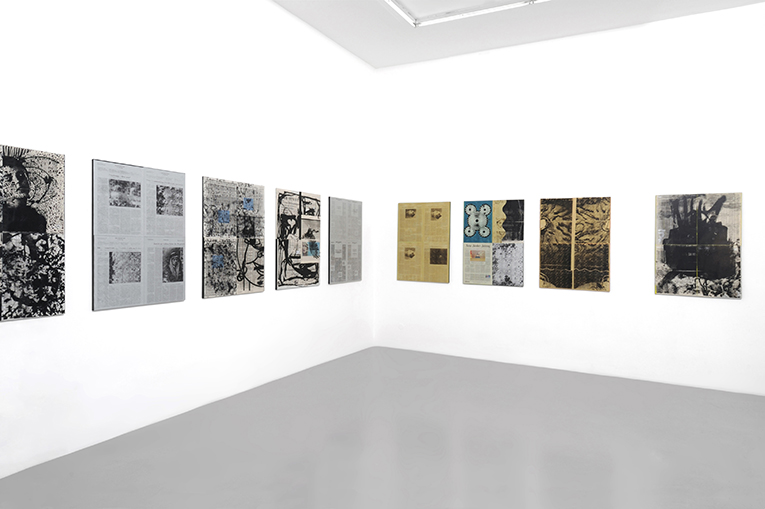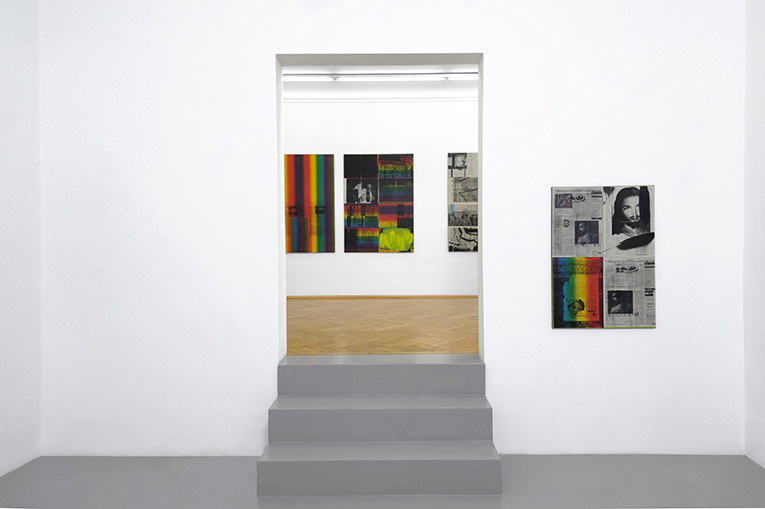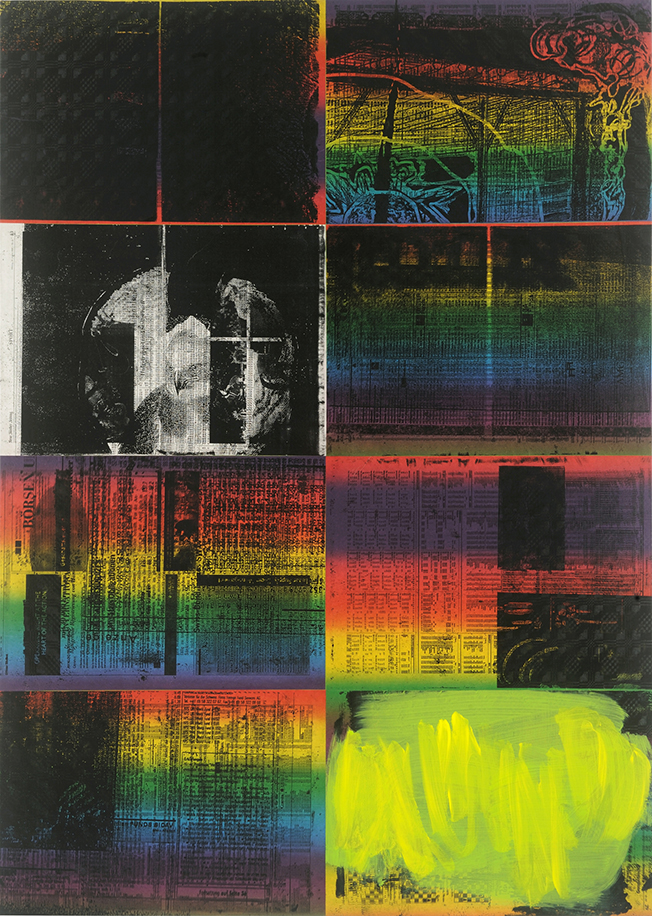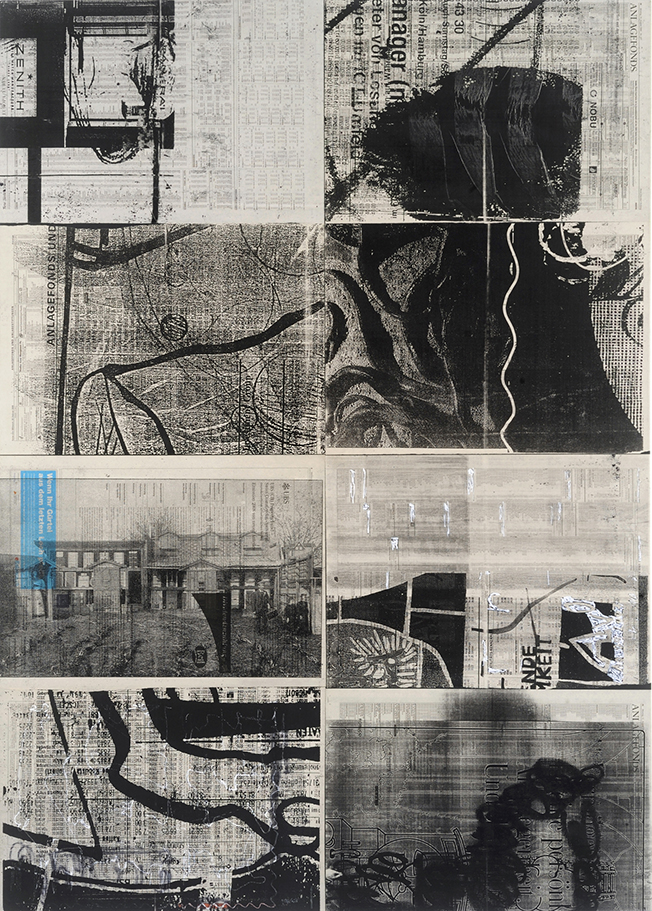
Installation view

Installation view

The Romantic Size of Capitalism (Untitled) # 19, 2015, xerox, correction pen, newspaper, acrylic, canvas
100 x 72 x 2 cm

The Romantic Size of Capitalism (view) # 18, 2015, xerox, tablecloth paper, acrylic, canvas
100 x 72 x 2 cm

The Romantic Size of Capitalism (with 3 blue fields) # 1, 2015, xerox, newspaper, acrylic, canvas
100 x 72 x 2 cm

The Romantic Size of Capitalism (Untitled) # 7, 2015, xerox, correction pen, newspaper, acrylic, canvas
100 x 72 x 2 cm

The Romantic Size of Capitalism (Untitled) # 15, 2015, xerox, tablecloth paper, acrylic, canvas
100 x 72 x 2 cm

Installation view

Installation view

The Romantic Size of Capitalism (gold) # 5, 2015, xerox, tablecloth paper, acrylic, canvas
100 x 72 x 2 cm

The Romantic Size of Capitalism (Untitled) # 9, 2015, xerox, ink, newspaper, tablecloth paper, acrylic, canvas
100 x 72 x 2 cm

The Romantic Size of Capitalism (gold) # 4, 2015, xerox, newspaper, acrylic, canvas
100 x 72 x 2 cm

The Romantic Size of Capitalism (bag) # 3, 2015, xerox, newspaper, acrylic, canvas
100 x 72 x 2 cm

Installation view

The Romantic Size of Capitalism (Untitled) # 8, 2015, xerox, newspaper, tablecloth paper, acrylic, canvas
100 x 72 x 2 cm

Installation view

Installation view

The Romantic Size of Capitalism (rainbow) # 6, 2015, xerox, tablecloth paper, acrylic, canvas
140 x 100 x 2 cm

The Romantic Size of Capitalism (Untitled) # 20, 2015, xerox, newspaper, tablecloth paper, acrylic, canvas
140 x 100 x 2 cm

The Romantic Size of Capitalism (Untitled) # 13, 2015, xerox, correction pen, newspaper, acrylic, canvas
140 x 100 x 2 cm

Installation view

The Romantic Size of Capitalism (Europe) # 2, 2015, xerox, newspaper, acrylic, canvas
100 x 72 x 2 cm

The Romantic Size of Capitalism (Untitled) # 10, 2015, xerox, newspaper, acrylic, canvas
100 x 72 x 2 cm

Untitled (yellow blue), 1999/2014, xerox, tablecloth paper, aluminium plate
60 x 44 cm

Untitled (newspaper), 2014, xerox, newspaper, tablecloth paper, aluminium plate
60 x 44 cm
Vor über einem halben Jahrhundert machten sich Gerhard Richter, Konrad Lueg, Sigmar Polke und Manfred Kuttner daran, dem Wirtschaftswundervolk den sogenannten Kapitalistischen Realismus vorzusetzen. Ironie, Kritik und Reform sollten in der Bezeichnung verschmelzen – und als Analogon zum Sozialistischen Realismus die Westwarenwelt durch Pop-Rhytmen zum schwingen bringen.
In Kunstaktionen, die ihrer Form wegen von heutigen Marketingtypen wohl dem sogenannten „Guerilla“-Stil zugeordnet würden, drängten die Studenten in die Öffentlichkeit. Aus Lueg wurde Konrad Fischer, der in seiner gleichnamigen Galerie zu Beginn nicht nur seine Künstlerfreunde ausstellte, sondern auch Carl Andre, Bruce Nauman oder On Kawara zeigte. Heute zählen die Künstler der Galerie Konrad Fischer zu den wichtigsten Positionen der zeitgenössischen Kunst, ihre Retrospektiven füllen die größten Häuser (aktuell: Polke im Museum Ludwig oder Kawara im Guggenheim), ihre Preise dominieren die globalen Auktionsstatistiken.
Die Oeuvres begründen somit einen Kapitalistischen Realismus, der schon alleine durch Verkaufs- und Eintrittspreise, durch Versicherungssummen und Besucherzahlen manifest scheint. Und das ganz unabhängig von ihrem kritischen Potential.
Aribert von Ostrowski entfaltet in seiner Ausstellung The Romantic Size of Capitalism einen neuen Stil: die kapitalistische Romantik. Schon seit einigen Jahren sind seine Aluminium- und Leinwandbildträger mit
den Zahlentabellen der aktuellen Börsenwerte grundiert, wie man sie in den großen deutschsprachigen Printprodukten täglich auffinden kann.
In der Vergangenheit standen diese Arbeiten entweder weitgehend unkommentiert für sich und waren zeitungsseitenmäßig gerastert oder mit comic-artigen, an Polke erinnernden Grinsemondgesichtern und Anderem schwarz überdruckt. Die Bleiwüstenkalkulationen ratterten vor dem Betrachterauge merkwürdig mechanisch die analogen und mysteriösen Weltwerte herunter.
In The Romantic Size of Capitalism gießt von Ostrowski nun aber Liebe über das Papier, denn es wird nicht nur farbig, es fließen ganze Regenbögen über die Leinwände – hier und dort kann wohl gar von einem malerischen Duktus gesprochen werden. Einerseits scheinen die Eingriffe Poppropaganda: mit großer Geste wird dem Kapitalismus hier Farbstrahlkraft aufgetragen, werden die Zeitungsseiten bunt hochgejazzt.
Das kalte Geld wird warm, abstrakte Werte werden lebendig und aus Druckerschwärze formen sich Goldbarren? So einfach kann das sein – und so simpel funktioniert ja auch der (Kunst-)Markt. Von Ostrowski entblößt in seiner Ausstellung sowohl das Kunstsystem als auch die allgemeine Börsenspekulationsblase. Denn „Die romantische Dimension des Kapitalismus“ thematisiert natürlich auch die gezeigte Ware in Form von Kunst – und nicht zuletzt deren Größe.
In Zeiten der statistischen Erfassung und Vermessung von Kunstwerken und ihrem jeweiligen Spekulationspotential lässt sich eben sagen, welche Leinwandgröße sich wohl am besten verkauft, welche Farben bevorzugt werden und in welchem Alter ein Künstler optimalerweise sein sollte um am Markt zu reüssieren.
Damit wird die Kunst ihrer dunklen Kraft beraubt. Was bleibt ist die romantische Dimension eines Kapitalismus für die Wohnzimmerwand, welcher aber grundsätzlich den gleichen Spielarten genügt, wie er in den Finanzteilen der Tageszeitungen beschrieben und dargestellt wird.
Den Kapitalistischen Realismus der Gegenwart findet man auf den Straßen Athens, in den Produktionshallen von Shenzhen. Aribert von Ostrowski zeigt Gegenwartskunst als romantisch verklärte Ware einer auf Profitmaximierung fixierten Welt. Und dass wir diese Kritik verstehen können und diese Bilder trotzdem tollkühn strahlen, verdeutlicht ihre große Qualität.
Konstantin Lannert
via Reflektor M
Over half a century ago, Gerhard Richter, Konrad Lueg, Sigmar Polke and Manfred Kuttner began their project of confronting those living during the economic miracle in Germany, the so called Wirtschaftswunder, with
an art movement called capitalist realism. This term conjoins irony, critique and the wish for reform in itself – functioning as an analogy to socialist realism, it was meant to bring movement to the world of Western German consumption via the rhythms of pop.
By way of performances that would today be labelled as guerilla art by the media posse, students movements began to form. Konrad Lueg became Konrad Fischer and his eponymous gallery curated not only his artist friends but also Carl Andre, Bruce Naumann or On Kawara. Today, these artists count among the most influential in contemporary art; their retrospectives fill the big institutions (currently: Polke in the Museum Ludwig or Kawara in the Guggenheim), and their prizes globally dominate the statistics put forth by auction houses. These oeuvres thus established the movement of capitalist realism which seems to manifest itself through sales, admission fees, insurance sums and visitor numbers alone. Not to speak of the critical potential inherent to the works themselves.
In his exhibition The Romantic Size of Capitalism, Aribert von Ostrowski creates a new stylistic approach: capitalist romanticism. For a few years now, the ground coat applied to his works has been consisting of numerical tables showing current stock exchange values as to be found in the large German-speaking newspapers every day.
In the past, these works either stood on their own without additional commentary, embedded into the typical newspaper print grids, or they were layered and blackened with comic-like Cheshire cat faces evoking Polke and other materials. The leaden empty waste lands of numbers and calculations jerkily and mechanically judder in front of the viewer‘s eye, jumbling analogue and mysterious market values.
In The Romantic Size of Capitalism however, Ostrowski now spills love over his paper – his works not only turn more colourful, but whole rainbows spread over the canvasses. Here and there, it is even possible to prescribe painterly characteristics. These interventions shout pop propaganda: in grand gestures, capitalism is infused with the the radiance of colour, newspaper pages turn into vibrantly hued jazz.
Cold cash is made warmer, abstract values come to life and the black printing ink transforms into gold bars? It is that easy – and the (art) market functions in a similarly simple way. In his exhibition, Ostrowski lays bare both the art discourse and the fragile bubble of stock market speculation. The “romantic dimension of capitalism” after all broaches the issue of art as commodity – and the inherent power of these structures.
In times of statistical surveys and measuring artistic objects according to their potential venture, we have become quick to ascribe certain value, to determine which canvas sizes are easier to sell, which colours are being preferred by potential buyers, and which ideal age an artist should have to be able to make a head start in the marketplace.
This robs art of its dark powers. What is left is the romantic dimension of a kind of capitalism suited for comfortably hanging on living room walls; a capitalism that follows the same beaten paths as described and performed in the financial sections of newspapers.
A contemporary capitalist realism, however, can be found on the streets of Athens, in the production halls of Shenzen. Aribert von Ostrowski displays modern art as romantically glorified commodity belonging to a world that is fixated on profit accumulation. That we can still recognise this critique while being basked in these canvasses‘ audacious radiance, speaks of their high quality.
Konstantin Lannert
via Reflektor M
translated Jennifer Leetsch